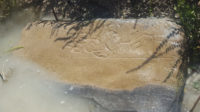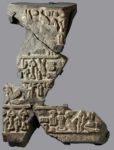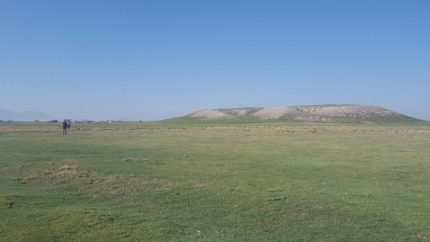 A Turkish farmer discovered an ancient stele from a lost kingdom that boasts of having defeated the powerful kingdom of Phrygia. Last summer, the farmer alerted archaeologists from the University of Chicago’s Oriental Institute (OI) who were surveying the ancient site of Türkmen-Karahöyük that he had seen a large stone with curious inscriptions when digging an irrigation canal the winter before. The team found the stone still in place sticking out of the water of the canal. They recognized the script as Luwian, an ancient Indo-European language used in the area during the Bronze and Iron Ages.
A Turkish farmer discovered an ancient stele from a lost kingdom that boasts of having defeated the powerful kingdom of Phrygia. Last summer, the farmer alerted archaeologists from the University of Chicago’s Oriental Institute (OI) who were surveying the ancient site of Türkmen-Karahöyük that he had seen a large stone with curious inscriptions when digging an irrigation canal the winter before. The team found the stone still in place sticking out of the water of the canal. They recognized the script as Luwian, an ancient Indo-European language used in the area during the Bronze and Iron Ages.
Working under the Konya Regional Archaeological Survey Project, Osborne and UChicago students were mapping the site as part of the Türkmen-Karahöyük Intensive Survey Project, located in an area littered with other famous ancient cities. Just by walking around the site’s surface, they collected bits of broken pottery from three thousand years of habitation at the site—a rich and promising find—until the farmer’s chance visit pointed them to the stone block known as a stele.
Osborne immediately identified a special hieroglyphic marking that symbolized the message came from a king. The farmer helped pull the massively heavy stone stele out of the irrigation canal with a tractor. From there it went to the local Turkish museum, where it was cleaned, photographed and readied for translation.
 The full inscription was deciphered by OI experts in Luwian script. It tells of King Hartapu, conqueror of the kingdom of Muska (aka Phrygia), courtesy of the storm gods who “delivered the kings to his majesty.” Linguistic analysis dates the stele to the late eighth century B.C. which is when Phrygia was ruled was King Midas.
The full inscription was deciphered by OI experts in Luwian script. It tells of King Hartapu, conqueror of the kingdom of Muska (aka Phrygia), courtesy of the storm gods who “delivered the kings to his majesty.” Linguistic analysis dates the stele to the late eighth century B.C. which is when Phrygia was ruled was King Midas.
This has of course given rise to many headlines about the local king defeating Midas, but that’s a bit of an equivocation. It’s not the legendary King Midas of golden touch and ears of an ass fame. If there was a real ruler named Midas who is the kernel of truth inside the legend, he lived long before the 8th century B.C. The first known historical ruler of Phrygia of that name (there are several) is recorded by ancient Greek and Assyrian chroniclers. Assyrian records of a King “Mita” of the Mushki (central Anatolian people associated with the Phrygians) date to between c. 718 and 709 B.C., the reign of Sargon II. Mita is first mentioned in 718 B.C. as being allied with an enemy of Sargon. Assyria defeated them, but nine years later Mita pled for aid from Sargon when his kingdom was attacked by Cimmerians, nomads from the Black Sea. Strabo writes in Geography I.III.21 that when the Cimmerians conquered Midas’ capital of Gordium, the king killed himself by drinking bull’s blood.
Setting the Midas issue aside, which is for the best as really there is no way of knowing if he was the king when this stele was inscribed and his name is only coming up because it’s so recognizable from an unrelated legend, the stele is important in what it reveals about the history of Türkmen-Karahöyük.
[N]ot quite 10 miles to the south is a volcano with a well-known inscription in hieroglyphics. It refers to a King Hartapu, but no one knew who he was—or what kingdom he ruled.
Now we know that Hartapu ruled Türkmen-Karahöyük, one of the largest cities of Asia Minor which at its peak covered 300 acres. Its ancient name remains unknown, but the OI’s Türkmen-Karahöyük Intensive Survey Project hopes to answer that question too.
